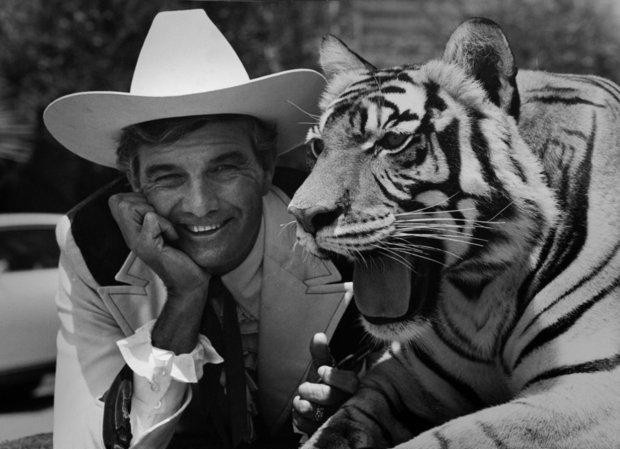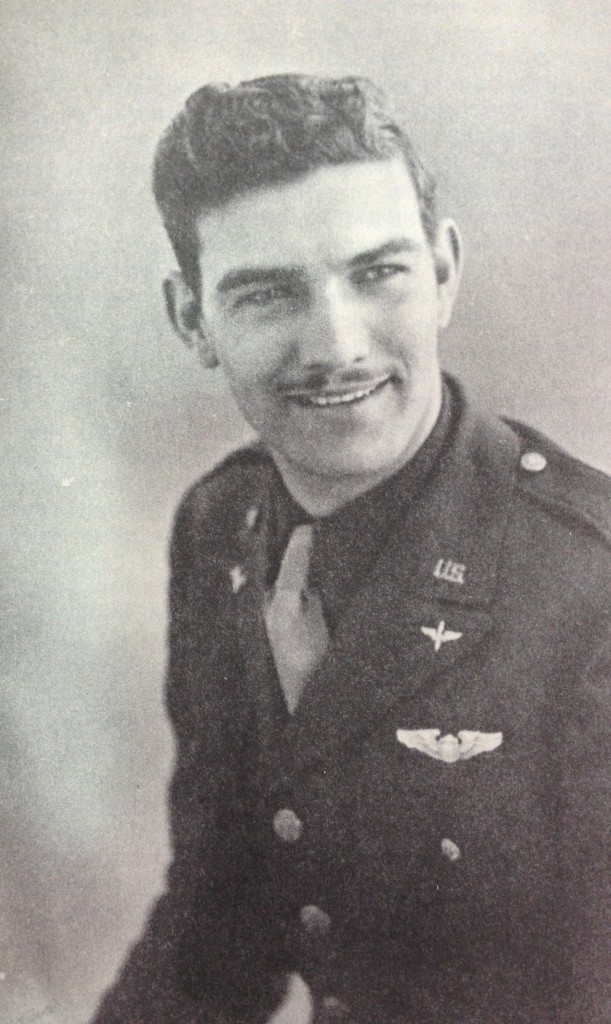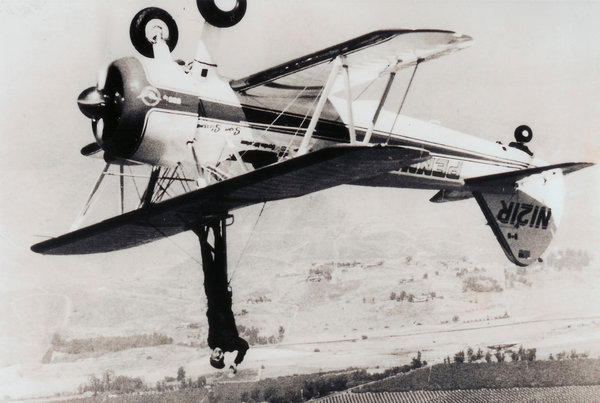Death of a Salesman
October 9, 2013 | by Sam Sweet

Once called the “friend of every insomniac in Southern California,” Cal Worthington haunted the nether regions of broadcast programming for more than sixty years. Judging by the frequency of his appearances, their consistency, and their longevity, Worthington might have been the biggest television star in the history of the West. That makes him as much a deity as anything California culture has seen in its short history. But he wasn’t an actor or a journalist or a politician. His church was a chain of car dealerships and his prophesies a series of madcap advertisements. For better or worse, everyone who lived in Southern California had to reckon with him.
Worthington’s long-running series of self-produced spots never deviated from a formula. The slender cowboy—six foot four in beaver-skin Stetsons and a custom Nudie suit—always preceded his hyperactive sales pitch with a gambol through the lot of his Dodge dealership, accompanied by an escalating succession of exotic animals. Originally it was an ape, then a tiger, an elephant, a black bear, and, finally, Shamu, the killer whale from SeaWorld—each of which was invariably introduced as Cal’s dog, Spot. Not once did he appear with a canine. The banjo-propelled jingle (set to the tune of “If You’re Happy and You Know It”) exhorted listeners to “Go see Cal, go see Cal, go see Cal,” a catchphrase that became the basis for the most infamous mondegreen in Golden State history. To this day, Pussycow remains a nostalgic code word exchanged among Californians who came of age in the era before emissions standards.
 Worthington himself became a figurehead for the omnipresence of advertising in modern life; for some, he personified the new, invasive capitalism of the television era. The ads always began with the same hasty introduction—“Here’s Cal Worthington and his dog Spot!”—as though he was always there, hiding behind the curtain of commercial breaks, waiting to ambush us and sell, sell, sell. When Worthington died last month, at ninety-two, it wasn’t shocking because it was sudden but rather because, for the great majority of Californians, Worthington wasn’t someone who appeared on television—he was a character who seemed to liveinside television.
Worthington himself became a figurehead for the omnipresence of advertising in modern life; for some, he personified the new, invasive capitalism of the television era. The ads always began with the same hasty introduction—“Here’s Cal Worthington and his dog Spot!”—as though he was always there, hiding behind the curtain of commercial breaks, waiting to ambush us and sell, sell, sell. When Worthington died last month, at ninety-two, it wasn’t shocking because it was sudden but rather because, for the great majority of Californians, Worthington wasn’t someone who appeared on television—he was a character who seemed to liveinside television.Born sixth in a nine-child family, Calvin Coolidge Worthington had been raised “starving and barefooted” on reservation land in Osage County, Oklahoma. His father, Benjamin Franklin Worthington, was a roustabout and failed horse trader whose lack of achievement both embarrassed and galvanized his son, who was motivated by the fear of being a nonentity. In his 1975 autobiography, My Dog Spot, Worthington recalled the wonderment he experienced when he first laid eyes an airplane: “If I could just learn to fly one of those things, I told myself, I would have a chance to be somebody.”
And in fact, he flew twenty-nine missions as a bomber pilot in World War II, but without a college degree he couldn’t fulfill his dream of becoming a commercial pilot. When a gas-station venture in Corpus Christi failed in 1947 he sold his ’36 Hudson Terraplane to save the business. Within a few weeks he’d bought and sold five other cars. His knack for sales was entirely inadvertent. Whenever he told his life story, he always portrayed aviation as his one true calling. Selling autos just happened to be the only occupation that didn’t make him feel like a failure.
 First lured to Los Angeles in 1948, Worthington was part of a massive migration of Okies and Texans who relocated to the West Coast after the war in the hope of escaping the farm-labor sector. They settled in a cluster of neighborhoods located in the flatlands southeast of downtown LA. (In those days, Bell Gardens was derisively known as “Billy Goat Acres,” just one of the ways in which the big city marginalized Okie families.) Assimilation into mainstream culture was all but guaranteed by two shiny commodities: the automobile and the television, a new invention that would become massively popular in the years after Worthington’s arrival in the city. In 1947, there were four hundred television sets in Los Angeles County and 1.5 million cars. By 1967, there were approximately six million TVs and four million cars.
First lured to Los Angeles in 1948, Worthington was part of a massive migration of Okies and Texans who relocated to the West Coast after the war in the hope of escaping the farm-labor sector. They settled in a cluster of neighborhoods located in the flatlands southeast of downtown LA. (In those days, Bell Gardens was derisively known as “Billy Goat Acres,” just one of the ways in which the big city marginalized Okie families.) Assimilation into mainstream culture was all but guaranteed by two shiny commodities: the automobile and the television, a new invention that would become massively popular in the years after Worthington’s arrival in the city. In 1947, there were four hundred television sets in Los Angeles County and 1.5 million cars. By 1967, there were approximately six million TVs and four million cars.As the model for television advertising shifted from single-sponsor shows to short commercial interruptions, Worthington invested in minute-long spots that ran continuously in cheap time slots: during kids programming, midnight movies, and Twilight Zone reruns. His “My dog Spot” ad was originally intended as a parody of a commercial featuring a motor-mouth pitchman from Encino named Chick Lambert, who appeared alongside an inert German shepherd in a popular series of spots for the Ralph Williams dealership in Encino. “I wanted to figure out a way to make people quit watchin’ them,” Worthington told the Los Angeles Times in 1985, “so I got me this big ol’ nasty ape, chained him to a car bumper and just sorta winged it.”
“I can beat or match any deal that guy out in the Valley can offer you,” boasted Worthington. And then, gesturing to the ape: “What’s more, my dog can lick his dog!” His business tripled. By the eighties, he was spending up to half a million per month on advertising. “You’d think you could coast and not do them for a while,” he said, “but the next day after you don’t have a commercial on, business drops.”
His ubiquity made him more than a celebrity—he became a collective point of reference. His jingle inspired the songs in Robert Altman’s Nashville. His ads were lampooned by Soupy Sales and Johnny Carson, and the latter invited Worthington on The Tonight Show in the late seventies, at the peak of his fame. At the same time, his name could be found amid the primordial graffiti left on the basement walls of the Masque, LA’s first punk-rock club: next to “Kill a Pig!” and “Everything is Wrong” someone scrawled, “Cal Worthington Was Here—He’s a Commie!”
Worthington’s name also frequently materialized in the work of writers, usually as an emblem of the tacky commerciality of Southern California. In Inherent Vice, Thomas Pynchon name-checked Worthington and satirized his late-night transmissions. Sam Shepard’s Cruising Paradise unfolds deep in the Inland Empire, where an adolescent’s wrung-out aunt watches a Worthington commercial “on the edge of an old abandoned vineyard, in one of those little clapboard box houses originally thrown up for Mexican migrant workers.”
In one of his infamous columns for the Los Angeles Free Press, Charles Bukowski pined for his hometown while on a trip to Utah. “No transport, no racetrack, no beer, no Cal Worthington,” he griped. “The general calm madness of Hollywood and Los Angeles will have to wait.” Around the same time, Frank Zappa skewered Worthington in his fifteen-minute rock opera, “Billy the Mountain.” He later said in an interview, “People in fifty years’ time should have documentation of monsters like Cal Worthington.”
A monster? Worthington’s commercials were incessant, but they weren’t insidious and ruthless in the manner of contemporary corporations. “My dog Spot” wasn’t the result of computer-generated market research. Worthington was an improviser who kept a running notepad of ideas on him at all times (presumably it contained a long list of animals), and he broke all of the New York advertising industry’s imperious dictums. His commercials repudiated well-groomed tacticians like David Ogilvy, who once wrote, “It pays to give a product a high class image instead of a bargain basement image. Also you can get more for it.” All told, Worthington sold half a million autos with his personal vision of Western absurdism. Could an Ogilvy idea have done better?
To the end, Worthington claimed he didn’t like cars. He preferred to pilot his own plane between his dealerships in Los Angeles and his twenty-four-thousand-acre almond and olive farm in Orland, just north of Sacramento. He invested his profits in other ventures because, as he liked to say, “you can’t have money lying around. You need to have that money working somewhere.” He owned cattle ranches in Nevada and Idaho, in addition to his spread in Orland, which is where he died, surrounded by family while watching NFL Sunday. He had six children, ranging in age from twelve to sixty-six. At times it seemed the only things he really believed in were land, progeny, and planes. Back in the eighties he used to fly traffic watch at dawn for one of the local television stations. In exchange, they offered him free advertising minutes, but he admitted he did it mostly because he loved the look of Los Angeles from above.
Most people come to LA to get into show business. Worthington encountered the concepts of show business and celebrity and assimilated them to himself. If you grew up in a place where your daily dose of television was peppered with constant messages from “Dealin’ Doug” or “Jolly John” or “Price Cuttin’ Nate Sutton,” all of them insisting that you “come on, come on, come on down to see the best deals around,” then you grew up with a piece of Cal Worthington. Still, something about his wacky bravura is distinctly Californian. After Worthington died I went to the central library in Glendale to check out a copy of My Dog Spot from Special Collections. “Pussycow,” said the thin, bespectacled librarian, handing me the pristine paperback.
Sam Sweet lives and works in northeast Los Angeles. His first book, Hadley, Lee, Lightcap, will be published next year.
http://www.theparisreview.org/blog/2013/10/09/death-of-a-salesman/

